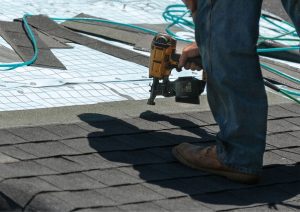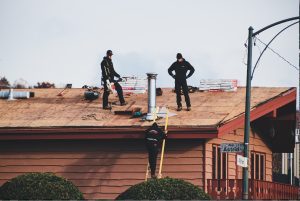Manhole covers aren’t exactly sexy, right? I mean, you don’t wake up in the morning saying, “Hey… today is manhole cover day”! So we, the good guys at Drainage Sales UK, are going to make a topic that may be perceived as a little boring, a lot more creative, engaging and interesting.
No, we can’t change the name to ‘person hole cover’! But we have decided to be different and create an infographic to better inform and educate both DIYers and professionals in the drainage industry, as to what to use and why.

Why replace a manhole cover?
In all likelihood, you will have to replace a manhole cover at some stage. This could be a result of a vehicle load damaging the manhole cover due to its weight, eroded road or pavement surface around it or even rust/age has taken its toll.
All in all, it is imperative that damaged manhole covers are replaced as soon as possible as they can be a serious safety hazard for pedestrians, cyclists and motorists.
Plastic, Iron or Steel?
As detailed in the infographic, you have a choice of three main materials, which each have its own advantages. Traditionally speaking, cast and ductile iron have been the material of choice due to their range of sizes and loading capacities, in some cases up to 90 tonnes; therefore, they are ideal for roads and loading docks that are frequently used by vehicles.
Galvanised steel covers are light, easy to install and have a loading capacity of up to 17 tonnes. Once again, Galvanised steel covers are ideal for roads that are used frequently by lighter vehicles.
Plastic manholes are a modern and popular choice for nearly all new building applications. Not only will they look better in a tarmac driveway but are also good for the environment as they can be recycled at the end of their lifespan.
Inspection chambers
Inspection chambers often referred to as manholes, enable drains to be inspected and cleaned regularly in order to avoid blockage. When replacing manhole covers it’s important to utilise a tape measure to find out the diameter of the chamber, this is especially important for plastic chambers. Once you’ve done that you can purchase a frame and cover to match the size of the chamber (Usually 450mm).
If the plastic inspection chamber is deeper than 1.2m, it’s imperative for safety purposes that a reducer is incorporated to reduce the opening to 350mm. You should always double-check that the frame and manhole cover you plan to purchase fit with the relevant manufacturers’ inspection chamber.
Manhole Cover options
There are two main types of covers to choose from. Standard manhole covers and recessed/ internal manhole covers.
Recessed manhole covers and frames are metal trays that allow you to lay a variety of slabs or block paving. They are easily attainable and eliminate the need for galvanised steel covers, therefore, they are ideal for patios and block paving; why ruin beautiful patterns and that chic look you love!? Internal manhole covers can also be utilised for use in an extension, garage or conservatory. This incorporates a double seal to ensure no odour escapes.
Installation
When installing a manhole cover and frame you need to remove the material around the old frame to ensure your level and bed the new frame in, backfilling around it and eventually installing the cover. View the infographic to guide you.
(If you are viewing this on a mobile device, clicking on the infographic will open it in a new, larger window.)

OK, so we haven’t exactly dressed our manhole covers in lingerie, but we do hope that we’ve been able to ‘lift the lid’ on your options. If you have any questions or need more personalised advice please visit us Drainage Sales!
Optimal Approaches to Manhole Cover Replacement Maintenance
Maintaining the integrity of urban infrastructure is paramount to ensuring the safety and functionality of cities worldwide. Among the crucial components of urban infrastructure are manhole covers, which provide access to underground utility networks.
Over time, wear and tear can degrade these covers, necessitating timely replacement to prevent accidents and ensure smooth operations. In this comprehensive exploration, we delve into the three best options for maintaining and replacing manhole covers, ensuring the continued reliability of essential urban infrastructure.
Routine Inspection and Maintenance
Routine inspection and maintenance serve as the cornerstone of effective manhole cover replacement management. Regular inspections allow authorities to identify signs of wear, corrosion, or damage early on, enabling prompt intervention to mitigate potential hazards.
Maintenance activities may include cleaning, lubricating hinges, and tightening bolts to ensure optimal performance and longevity of manhole covers.
Key Practices:
- Conducting scheduled inspections of manhole covers across urban areas.
- Implementing a proactive maintenance schedule to address minor issues before they escalate.
- Establishing protocols for swift repair or replacement of damaged manhole covers to minimize disruptions.
Benefits:
- Early detection of wear and damage reduces the risk of accidents and injuries.
- Proactive maintenance extends the service life of manhole covers, optimizing resource utilization.
- Timely repairs and replacements enhance the reliability and safety of urban infrastructure, fostering community trust and satisfaction.
Utilizing Advanced Materials and Technologies
Advancements in materials science and technology offer innovative solutions for enhancing the durability and performance of manhole covers.
Traditional cast iron covers are being replaced with high-strength composite materials, such as fibreglass-reinforced polymers (FRP) or ductile iron, which exhibit superior resistance to corrosion, rust, and deformation. Additionally, incorporating smart technologies, such as embedded sensors or RFID tags, enables real-time monitoring of manhole cover conditions, facilitating predictive maintenance and proactive interventions.
Key Practices:
- Transitioning from conventional cast iron covers to composite materials with enhanced properties.
- Integrating smart technologies, such as IoT sensors or RFID tags, for continuous monitoring and data collection.
- Collaborating with manufacturers and technology providers to explore cutting-edge solutions tailored to specific urban environments.
Benefits:
- Composite materials offer superior resistance to corrosion, reducing the frequency of replacements and associated costs.
- Smart technologies enable data-driven decision-making and proactive maintenance strategies, optimizing resource allocation.
- Enhanced durability and performance contribute to safer urban environments and improved infrastructure resilience.
Maintaining manhole covers is essential for preserving the safety, functionality, and aesthetics of urban infrastructure. By implementing a combination of routine inspection and maintenance, utilizing advanced materials and technologies, and engaging community participation and awareness, cities can ensure the timely replacement and upkeep of manhole covers, safeguarding the well-being and satisfaction of residents and visitors alike.
Embracing these best options for manhole cover maintenance paves the way for resilient, sustainable, and vibrant urban environments for generations to come.
Wrapping It Up
In conclusion, ensuring the effective maintenance and replacement of manhole covers is essential for upholding the safety, functionality, and aesthetic appeal of urban infrastructure. By implementing the three best options outlined in this guide, cities can proactively address maintenance needs, optimize resource utilization, and foster community engagement, resulting in safer and more resilient urban environments.
Routine inspection and maintenance serve as the foundation of a proactive approach to manhole cover replacement management. By conducting regular inspections and implementing timely maintenance activities, municipalities can detect signs of wear or damage early on and intervene promptly to prevent accidents and disruptions. Proactive maintenance not only extends the service life of manhole covers but also enhances the reliability and safety of urban infrastructure, fostering community trust and satisfaction.
Utilizing advanced materials and technologies offers innovative solutions for enhancing the durability and performance of manhole covers. Transitioning from conventional cast iron covers to high-strength composite materials or incorporating smart technologies enables real-time monitoring and data-driven decision-making. These advancements contribute to safer urban environments, reduced maintenance costs, and improved infrastructure resilience, positioning cities at the forefront of sustainable urban development.
Engaging community participation and awareness is paramount for promoting a shared sense of responsibility for manhole cover maintenance. By fostering collaboration between municipalities and local residents, businesses, and community organizations, cities can establish awareness campaigns, citizen reporting systems, and volunteer initiatives. These efforts empower communities to actively contribute to the detection and resolution of maintenance issues, enhancing public safety and fostering civic pride and engagement.
Through the collective implementation of these best options, cities can navigate the challenges of manhole cover maintenance and replacement effectively, ensuring the continued reliability and safety of urban infrastructure for residents and visitors alike. Embracing proactive maintenance practices, leveraging innovative technologies, and fostering community participation are key pillars of a holistic approach to urban infrastructure management, paving the way for resilient, sustainable, and vibrant cities of the future.
Frequently Asked Questions
1. How often should manhole covers be inspected and maintained?
Manhole covers should be inspected regularly, with the frequency depending on factors such as traffic volume, environmental conditions, and the age of the infrastructure. As a general guideline, municipalities may conduct inspections quarterly or semi-annually, with more frequent inspections in high-traffic areas or harsh environments.
2. What are the advantages of using composite materials for manhole covers?
Composite materials offer superior resistance to corrosion, rust, and deformation compared to traditional cast iron covers. They are also lighter in weight, making them easier to handle during installation and maintenance. Additionally, composite covers are non-conductive, reducing the risk of electrical accidents and providing added safety benefits.
3. Are there any regulations or standards governing the maintenance of manhole covers?
Yes, there are industry standards and regulations that govern the design, installation, and maintenance of manhole covers, such as those established by organizations like ASTM International or the American Association of State Highway and Transportation Officials (AASHTO). Municipalities may also have specific regulations or guidelines in place to ensure compliance with safety and performance standards.








